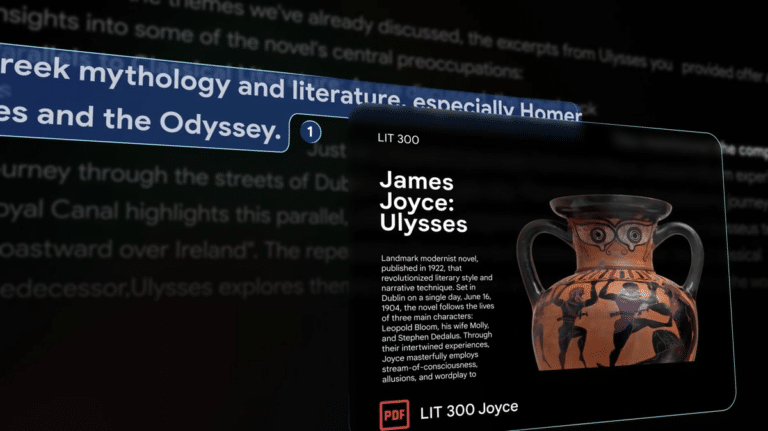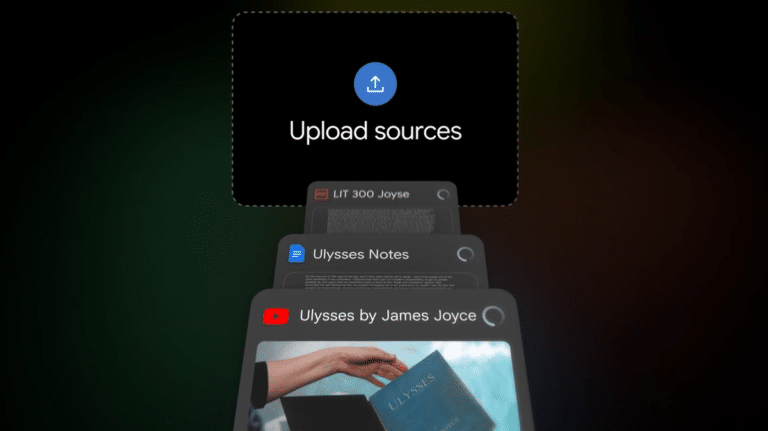Here’s how AI tools like NotebookLM are revolutionizing research.
In the digital age, where information flows endlessly, AI-powered research tools are transforming the way knowledge is gathered, organized, and interpreted. One standout in this numerical revolution is NotebookLM, a product developed by Google that integrates advanced AI to enhance academic and professional research workflows. By acting as a virtual research assistant, NotebookLM is redefining how researchers synthesize information across diverse sources, making the process more intuitive and efficient.
The Rise of AI in Research
Artificial intelligence has steadily permeated various aspects of our lives, and its role in research is becoming increasingly profound. Traditional research methods often require extensive manual effort—reading, annotating, and cross-referencing multiple sources to extract relevant information. AI tools like NotebookLM streamline this process by leveraging natural language processing and machine learning to help users organize, analyze, and generate insights from their materials.
NotebookLM began as Project Tailwind in 2023 and has since evolved into a robust research platform. It is powered by Google’s Gemini AI, offering dynamic capabilities that go beyond simple data extraction. The tool’s ability to understand context, track citations, and facilitate brainstorming makes it an indispensable companion for knowledge researchers, engineers and supporting workers.
How NotebookLM Works
NotebookLM’s workflow is designed to fit naturally into a researcher’s process while enhancing productivity at every step. The platform supports various document formats, including PDFs, Google Docs, and web links, enabling users to upload their sources into a personalized notebook. Once imported, NotebookLM becomes an AI-powered collaborator, capable of answering questions, summarizing content, and drawing connections across different documents.
For those conducting book-based research, NotebookLM allows the seamless integration of quotes from both public domain works and proprietary books. By curating key passages into Google Docs with proper metadata—such as author name, title, and page numbers—users can create a custom dataset that fuels the AI’s responses. This flexibility eliminates the need for rigid bibliographic formats, making the tool adaptable to various research styles.
To further streamline workflows, users can leverage third-party apps like ReadWise or Google Play Reader to automatically export highlighted text to Google Docs. This functionality makes it easy to compile comprehensive quotation collections without duplicating efforts.
The workflow of NotebookLM aligns seamlessly with the way researchers typically engage with information. From source importation to the final synthesis of ideas, the platform introduces efficiencies at every stage while preserving the researcher’s agency in shaping the inquiry. The following list outlines the core steps involved in using NotebookLM effectively:
NotebookLM Workflow
- Source Importation
- Upload PDFs, Google Docs, web links, or text-based documents.
- Use apps like Google Play Reader or ReadWise to automatically export book highlights into Google Docs.
- Quote Curation
- Format key passages with metadata (author name, title, page number).
- Consolidate quotes into a single Google Doc or organize them by book or topic.
- Source Integration
- Import curated documents into NotebookLM as Sources.
- The AI automatically identifies metadata and structures the content.
- Question-Based Research
- Ask detailed questions directly in the chat interface.
- Examples: “What are the key themes in this research?” or “Which sources discuss collective intelligence?”
- Inline Citations
- Receive AI-generated answers with direct links to referenced materials.
- Click on citations to verify or explore passages in context.
- Note-Taking & Brainstorming
- Write personal insights or save chat responses as Notes.
- Use the Studio Panel to organize notes or convert them into new Sources.
- Source Selection
- Filter sources to narrow down the AI’s focus on specific documents or themes.
- Enable or disable certain sources to customize chat responses.
- Synthesis & Analysis
- Combine multiple notes into structured outlines.
- Ask the AI to generate summaries, bibliographies, or quizzes based on curated materials.
- Collaboration & Export
- Collaborate with others by sharing notebooks.
- Export finalized research materials into Google Docs or other formats.
- Iterative Refinement
- Continue curating, questioning, and synthesizing information as research evolves.
This structured workflow allows users to engage with information dynamically, shifting between passive data collection and active synthesis. By blending automation with human insight, NotebookLM fosters a more iterative and reflective approach to knowledge work.
Organizing and Synthesizing Information
NotebookLM doesn’t just regurgitate facts—it helps researchers synthesize insights. The platform includes tools to categorize notes, brainstorm ideas, and transform scattered thoughts into structured outlines. As users interact with the system, they can ask nuanced questions like, “What were the primary arguments in Wright’s Non-Zero?”, “Which authors discuss collective intelligence?”, “What connections did Steven Johnson draw between innovation and the adjacent possible?”, or “How did Kauffman’s theory of the adjacent possible influence modern scientific thought?”
One of NotebookLM’s standout features is its inline citation system, which links every AI-generated response to its source material. This not only ensures transparency but also empowers users to fact-check and verify the information independently—a crucial aspect in academic research.
Additionally, researchers can convert their notes into standalone sources, allowing the AI to treat their own insights as primary data. This self-reinforcing loop encourages iterative thinking and helps users refine their ideas more systematically.
Expanding Research Capabilities
NotebookLM’s capacity to process large volumes of data makes it particularly valuable for long-term projects. The source selection feature enables users to isolate specific datasets, tailoring the AI’s responses to focus on particular themes or questions. Whether summarizing financial reports or exploring historical texts, the platform adapts to the unique needs of each project.
Moreover, the tool facilitates collaborative research by supporting multi-source notebooks. Teams can collectively contribute materials, annotate findings, and generate comprehensive bibliographies—all within a unified workspace.
Future Prospects of AI in Research
As AI tools like NotebookLM continue to evolve, they promise to reshape the entire research landscape. The integration of audio overviews, voice interaction, and personalized content generation hints at a future where AI not only assists but also actively participates in knowledge creation.
However, these advancements raise important questions about accuracy, authorship, and intellectual integrity. Developers like Steven Johnson, who is part of the NotebookLM team, emphasize the importance of fact-checkable AI—ensuring that machine-generated insights are always grounded in verifiable sources.
Conclusion
AI-powered research tools like NotebookLM are ushering in a new era of knowledge work. By automating routine tasks and enhancing information synthesis, they empower researchers to focus on higher-order thinking and creativity. As these tools become more sophisticated, they hold the potential to redefine not only how we conduct research, but how we engage with knowledge itself.
The journey is still unfolding, but one thing is clear—AI is not replacing researchers; it’s elevating their capabilities, making the pursuit of knowledge more accessible and insightful than ever before.
If you are interested in this topic, we suggest you check our articles:
- AI in Medical Research: Exploring Its Impact and Innovations
- How Public Libraries Are Using Artificial Intelligence
- Generative AI in Education: Is Banning an Option?
Sources: NotebookLM, Steven Johnson on Medium, TheVerge
Written by Alius Noreika


